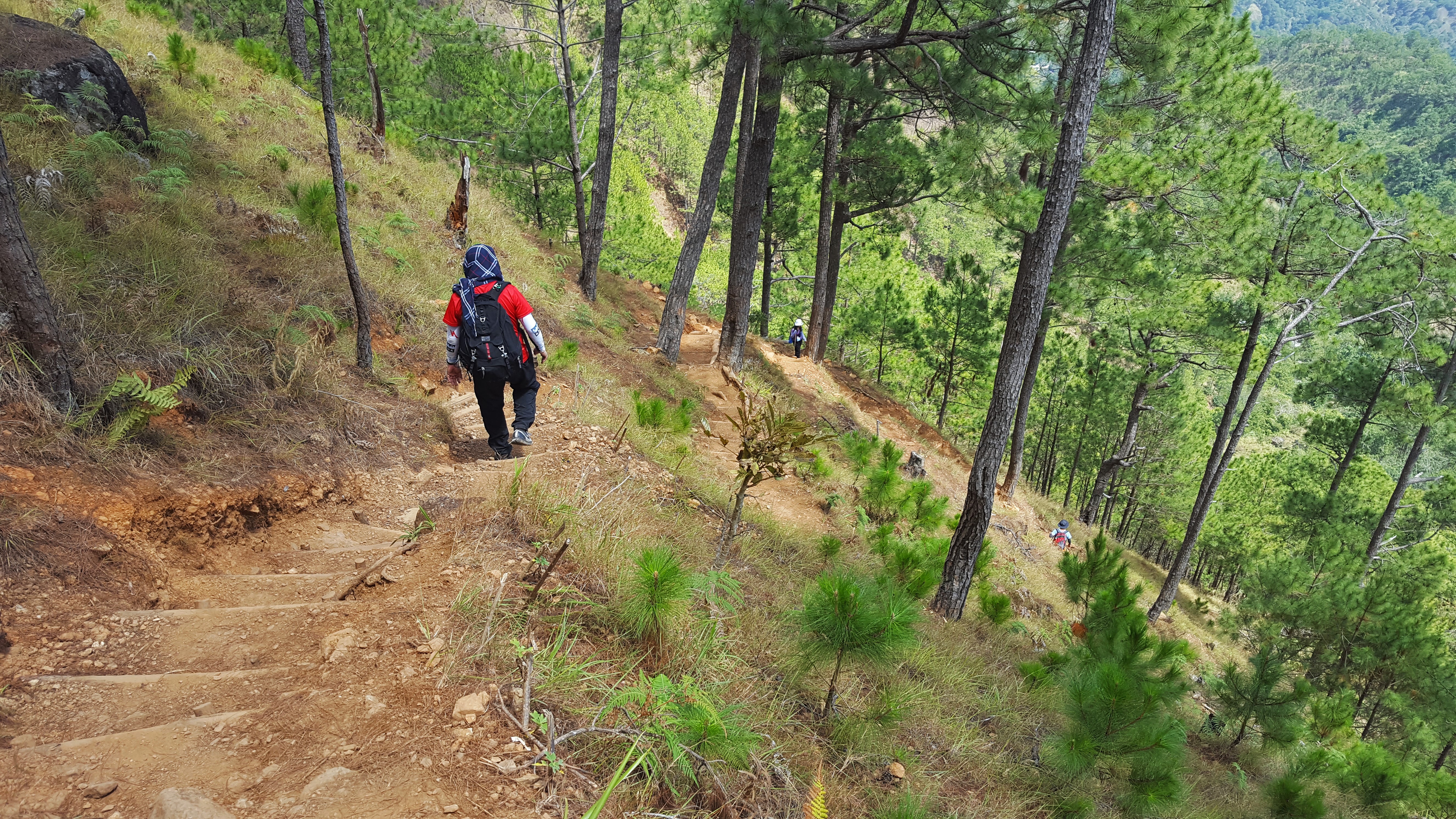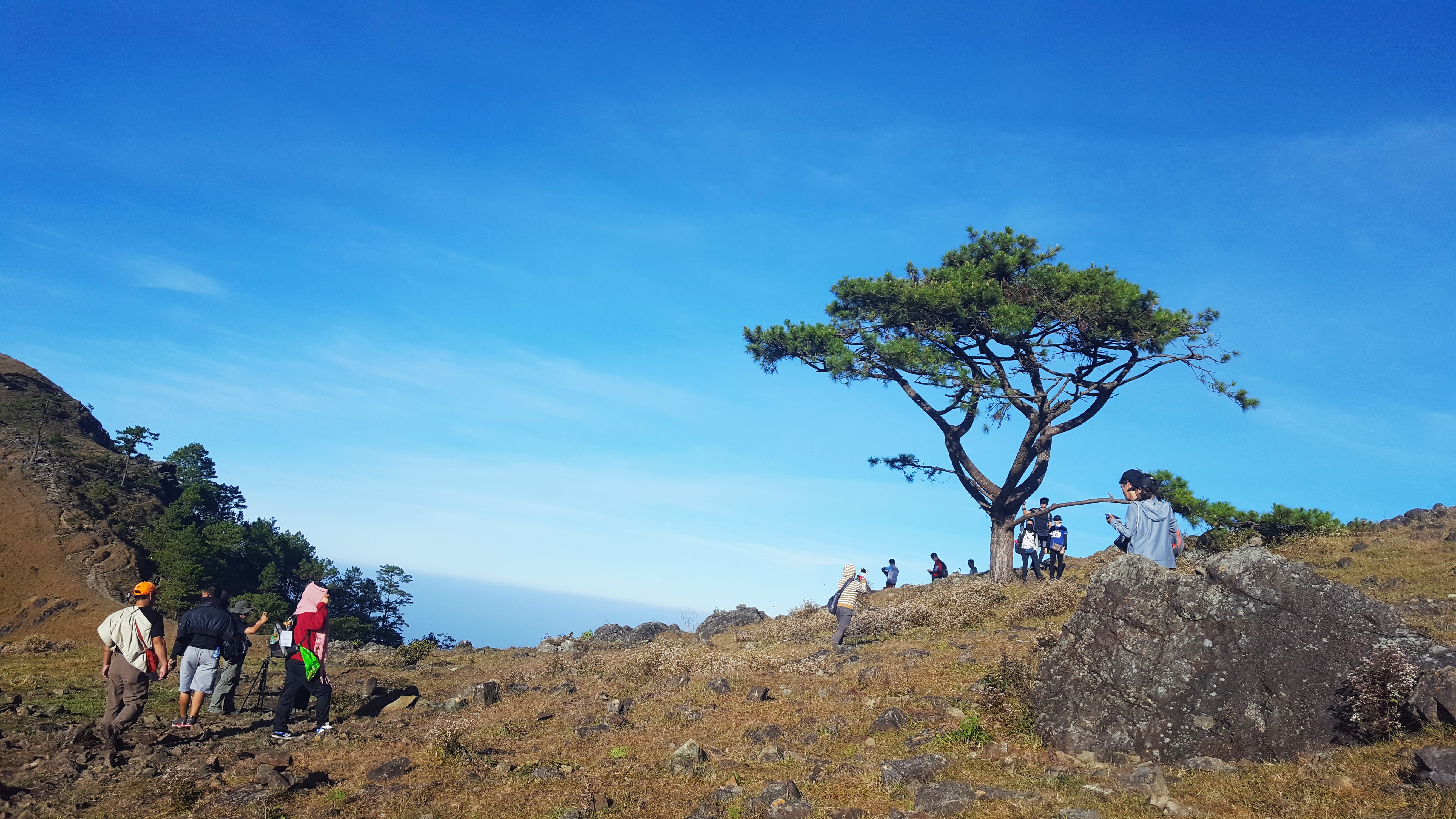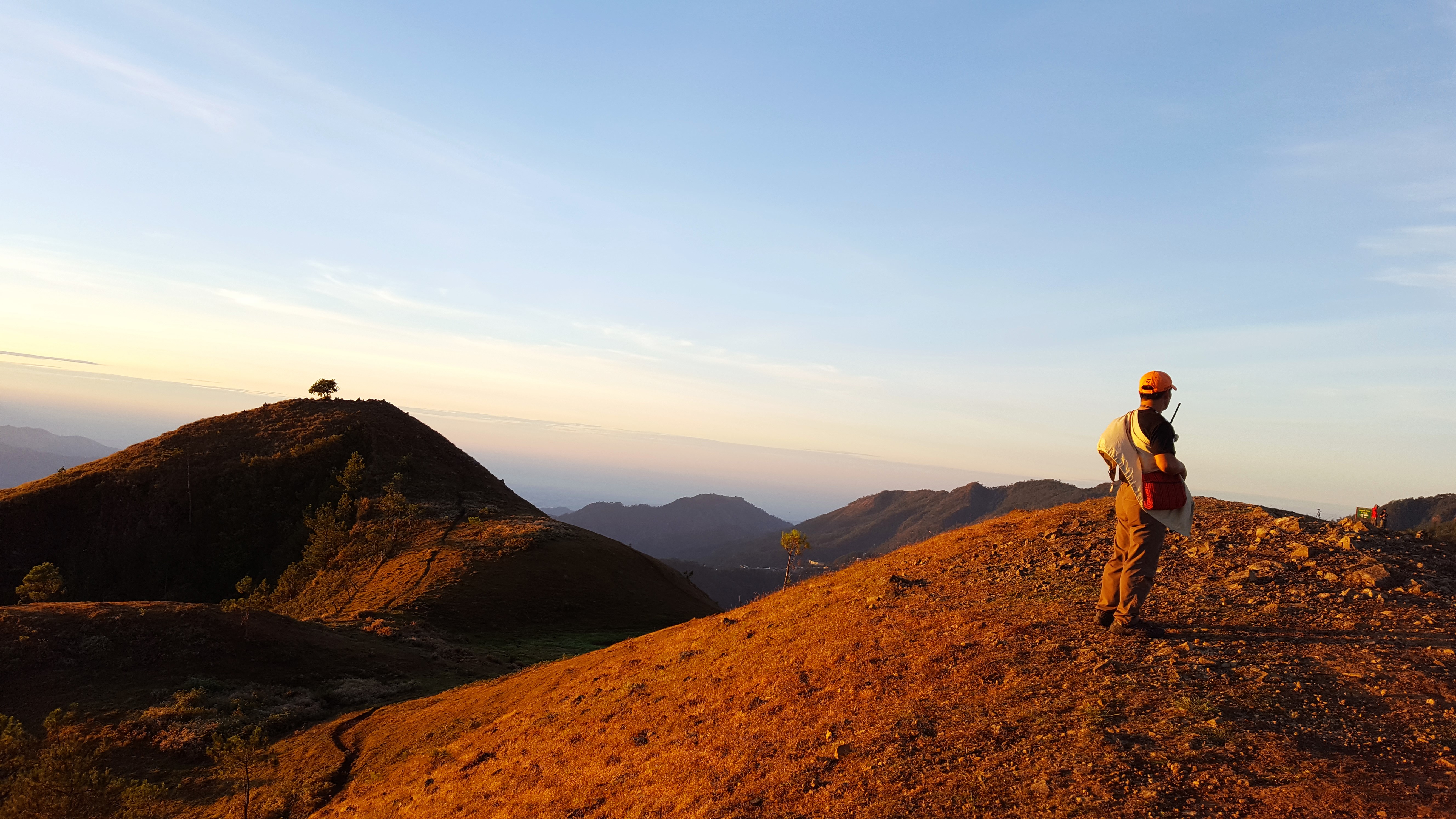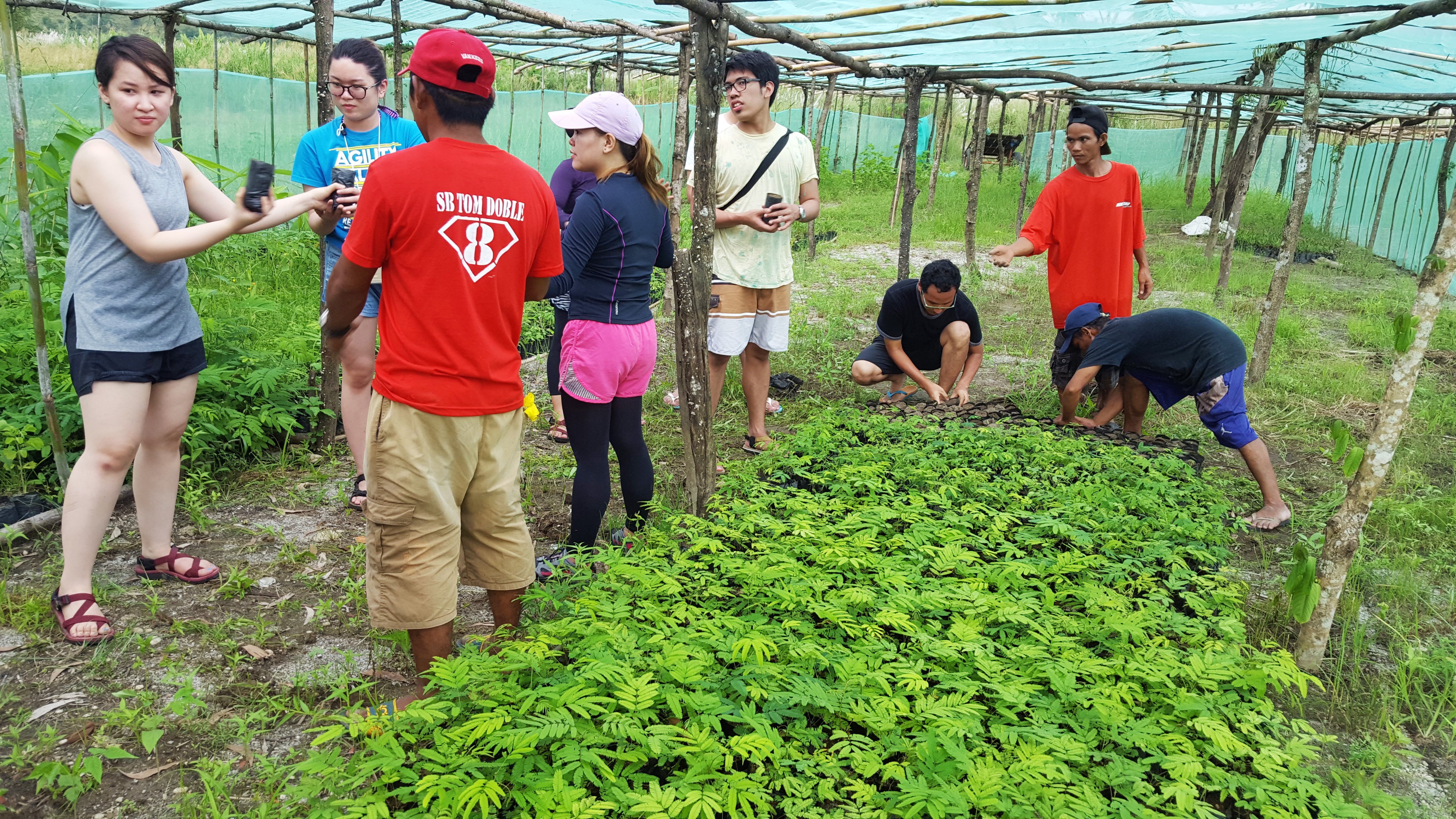Mountaineering 101: Guide to chasing the elusive sea of clouds
ADVERTISEMENT

Welcome, Kapamilya! We use cookies to improve your browsing experience. Continuing to use this site means you agree to our use of cookies. Tell me more!
Mountaineering 101: Guide to chasing the elusive sea of clouds
Rhys Buccat,
ABS-CBN News
Published Jun 09, 2018 06:43 AM PHT
|
Updated Jun 11, 2018 08:15 PM PHT
True-blue adventure seekers share a built-in compass that points them to all types of seas.
True-blue adventure seekers share a built-in compass that points them to all types of seas.
The force of this compass just gets stronger in summer. The warm months of March, April, May, and June are the best times to explore the seas, as well as to witness a sea of clouds.
The force of this compass just gets stronger in summer. The warm months of March, April, May, and June are the best times to explore the seas, as well as to witness a sea of clouds.
During this season the moisture from the environment quickly evaporates, resulting in the formation of clouds in high-altitude places, also known as sea of clouds.
During this season the moisture from the environment quickly evaporates, resulting in the formation of clouds in high-altitude places, also known as sea of clouds.
Before the rainy season begins-- and the trails become slippery and bushy-- awaken your adventurer's compass, and chase that majestic sea of clouds. But first off, familiarize yourself with the right gear and attitude. Here are some of the things you will need:
Before the rainy season begins-- and the trails become slippery and bushy-- awaken your adventurer's compass, and chase that majestic sea of clouds. But first off, familiarize yourself with the right gear and attitude. Here are some of the things you will need:
ADVERTISEMENT
ALWAYS WEAR PROPER GEAR
The Philippines may be a tropical country, but the temperatures in its highest peaks can be very unforgiving. In the famous Mt. Pulag of Benguet, for example, temperatures can drop to below zero in the colder months.
The Philippines may be a tropical country, but the temperatures in its highest peaks can be very unforgiving. In the famous Mt. Pulag of Benguet, for example, temperatures can drop to below zero in the colder months.
Some trails are also paved with sharp stones that can easily slice off the soles of your shoes, while others are too slippery or too parched. It is, thus, important to wear the right gear to keep you going, and to avoid injuries and discomfort.
Some trails are also paved with sharp stones that can easily slice off the soles of your shoes, while others are too slippery or too parched. It is, thus, important to wear the right gear to keep you going, and to avoid injuries and discomfort.
1. Dri-fit top and pants
Climbing a mountain is a tedious endeavor. It's definitely going to make you sweat, regardless of how low the temperature is.
Climbing a mountain is a tedious endeavor. It's definitely going to make you sweat, regardless of how low the temperature is.
That's why it's best to wear clothes that are made of polyester or dri-fit fabric. This type of cloth allows your sweat to freely evaporate instead of absorbing it. It also dries easily in case it rains, which is very likely in tropical forests.
That's why it's best to wear clothes that are made of polyester or dri-fit fabric. This type of cloth allows your sweat to freely evaporate instead of absorbing it. It also dries easily in case it rains, which is very likely in tropical forests.
When climbing "freezing" mountains like Mt. Pulag, use a dri-fit shirt as first layer of clothing before jackets and windbreakers. Clothes that are made of cotton tend to absorb moisture, which can be very uncomfortable when it starts to be chilly.
When climbing "freezing" mountains like Mt. Pulag, use a dri-fit shirt as first layer of clothing before jackets and windbreakers. Clothes that are made of cotton tend to absorb moisture, which can be very uncomfortable when it starts to be chilly.
ADVERTISEMENT
2. An ergonomic backpack
For short climbs, a mid-sized belt bag or an ordinary backpack will do. But in long climbs-- usually 12-48 hours-- you will need an ergonomic backpack that can support substantial weight without breaking your spine.
For short climbs, a mid-sized belt bag or an ordinary backpack will do. But in long climbs-- usually 12-48 hours-- you will need an ergonomic backpack that can support substantial weight without breaking your spine.
An ergonomic backpack has a tough yet breathable back pad, cushioned shoulder straps, and hip belt. These will distribute the weight equally across your back, preventing muscle strains and other discomforts. Also, if you can't afford the hefty price of waterproof backpacks, buy a rain cover instead.
An ergonomic backpack has a tough yet breathable back pad, cushioned shoulder straps, and hip belt. These will distribute the weight equally across your back, preventing muscle strains and other discomforts. Also, if you can't afford the hefty price of waterproof backpacks, buy a rain cover instead.
3. A reliable pair of hiking shoes
There's a reason why manufacturers classify shoes as "running," "training," and "walking." So when you're climbing a mountain, it goes without saying that you will need a pair of hiking shoes.
There's a reason why manufacturers classify shoes as "running," "training," and "walking." So when you're climbing a mountain, it goes without saying that you will need a pair of hiking shoes.
Unlike others, hiking shoes are specially designed to support your feet and ankles when you walk through inclined paths. Hiking shoes also have tough and insulated soles that will enable you to walk through harsh terrains. In choosing a pair of boots, always go for waterproof. Pair it with breathable socks, and you're good to go.
Unlike others, hiking shoes are specially designed to support your feet and ankles when you walk through inclined paths. Hiking shoes also have tough and insulated soles that will enable you to walk through harsh terrains. In choosing a pair of boots, always go for waterproof. Pair it with breathable socks, and you're good to go.
4. Jackets, windbreakers, and ponchos
The weather in tropical mountains are very unpredictable. At one point, the sun is up and shining. The next thing you know, the clouds have already turned grey, and a downpour is brewing. This can happen all year round, regardless of the season.
The weather in tropical mountains are very unpredictable. At one point, the sun is up and shining. The next thing you know, the clouds have already turned grey, and a downpour is brewing. This can happen all year round, regardless of the season.
ADVERTISEMENT
Better be prepared with a waterproof jacket or a poncho that can cover you and your stuff, including your backpack. Keep them in the most reachable pocket of your bag, so you can cover up before you're completely soaked. A windbreaker is important when climbing Mt. Pulag or Mt. Apo, where the breeze from the summit can be freezing.
Better be prepared with a waterproof jacket or a poncho that can cover you and your stuff, including your backpack. Keep them in the most reachable pocket of your bag, so you can cover up before you're completely soaked. A windbreaker is important when climbing Mt. Pulag or Mt. Apo, where the breeze from the summit can be freezing.
5. Other necessities
Climbing a mountain will also test your packing skills. You have to be as equipped as possible, but you have to keep your backpack light. Aside from clothes, shoes, and jackets, here are other things you must prepare if you're doing long climbs and camping:
Climbing a mountain will also test your packing skills. You have to be as equipped as possible, but you have to keep your backpack light. Aside from clothes, shoes, and jackets, here are other things you must prepare if you're doing long climbs and camping:
- Water bottle (at least 2L)
- Hygiene kit
- First aid kit
- Walking stick
- Gloves
- Duct tape (your best friend/alternative to ropes)
- Trail food (chocolates, protein bars, nuts)
- Flashlights or headlamps (for camping and night climbs)
- Light tent, sleeping bag, cooking set
- Sun protection (hats, sunblock, lip balm)
- Garbage bags
- Water bottle (at least 2L)
- Hygiene kit
- First aid kit
- Walking stick
- Gloves
- Duct tape (your best friend/alternative to ropes)
- Trail food (chocolates, protein bars, nuts)
- Flashlights or headlamps (for camping and night climbs)
- Light tent, sleeping bag, cooking set
- Sun protection (hats, sunblock, lip balm)
- Garbage bags
BASIC TIPS FOR A SEAMLESS CLIMB
1. Prepare yourself, exercise
Climbing a mountain isn't the same as going to the beach, where you don't even need swimming skills. Time and again, it is a tedious activity that will require you to stretch your muscles and twist your joints.
Climbing a mountain isn't the same as going to the beach, where you don't even need swimming skills. Time and again, it is a tedious activity that will require you to stretch your muscles and twist your joints.
Most mountaineers engage in other activities apart from climbing-- running to prepare their legs, swimming to train their lungs, and so on. You need to prepare your body to endure long walks and the high altitude. No wonder, a lot of mountaineers are physically fit.
Most mountaineers engage in other activities apart from climbing-- running to prepare their legs, swimming to train their lungs, and so on. You need to prepare your body to endure long walks and the high altitude. No wonder, a lot of mountaineers are physically fit.
2. Test your equipment before you leave
You may have all the right equipment but if you don't know how to use them, they all amount to nothing.
You may have all the right equipment but if you don't know how to use them, they all amount to nothing.
ADVERTISEMENT
Before packing your stuff, test every single one of them first. Assemble your tent to make sure all the pieces are complete. Buy new batteries for your flashlight. Walk around the block using your hiking shoes to make sure that it fits well. Bad-fitting shoes will result in blisters and even injury.
Before packing your stuff, test every single one of them first. Assemble your tent to make sure all the pieces are complete. Buy new batteries for your flashlight. Walk around the block using your hiking shoes to make sure that it fits well. Bad-fitting shoes will result in blisters and even injury.
Make sure that you know how to operate your cooking set. The recent fire accident in Mt. Pulag was caused by a camper's unfamiliarity with a butane gas stove.
Make sure that you know how to operate your cooking set. The recent fire accident in Mt. Pulag was caused by a camper's unfamiliarity with a butane gas stove.
3. Hire a local guide
No one knows a mountain's terrain better than a local who grew up playing hide and seek in it. Hiring a local ensures your safety, and it also supports the local ecotourism industry.
No one knows a mountain's terrain better than a local who grew up playing hide and seek in it. Hiring a local ensures your safety, and it also supports the local ecotourism industry.
A local can also help you identify edible fruits and wild plants that you can cook into a healthy dinner. As an added bonus, you're also making a new friend.
A local can also help you identify edible fruits and wild plants that you can cook into a healthy dinner. As an added bonus, you're also making a new friend.
4. Take nothing, leave nothing
What better way to respect a mountain than admire its natural beauty, and leave it undisturbed.
What better way to respect a mountain than admire its natural beauty, and leave it undisturbed.
ADVERTISEMENT
The mountains are full of interesting stones, endemic plants and animals that contribute to the overall health of its ecosystem. These must not be taken as souvenir items. Selfies, groufies, and fond memories should be enough.
The mountains are full of interesting stones, endemic plants and animals that contribute to the overall health of its ecosystem. These must not be taken as souvenir items. Selfies, groufies, and fond memories should be enough.
Most importantly, you bring your own garbage bags for your waste, and carry it with you on your way down.
Most importantly, you bring your own garbage bags for your waste, and carry it with you on your way down.
5. The sea of clouds can be elusive
The majestic sea of clouds isn't all there is to climbing a mountain. Tropical mountains are very unpredictable, and a change in weather condition can affect your chances of seeing a sea of clouds.
The majestic sea of clouds isn't all there is to climbing a mountain. Tropical mountains are very unpredictable, and a change in weather condition can affect your chances of seeing a sea of clouds.
This elusive scenery is just a bonus to all the new memories and discoveries you made during your climb. Besides, you can always come back and test your luck another time.
This elusive scenery is just a bonus to all the new memories and discoveries you made during your climb. Besides, you can always come back and test your luck another time.
ADVERTISEMENT
ADVERTISEMENT








